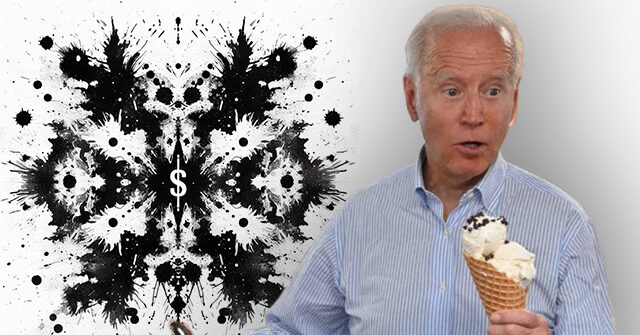Top News
Breitbart Business Digest: February’s Jobs Numbers Are an Economic Rorschach Test

What You Takeaway Depends on What You Carry in
The February jobs numbers should be seen as an economic Rorschach test. What you see in the ink blots released by the Department of Labor largely depends on what you were already inclined to see.
Nonfarm payrolls rose by 275,000 in February, easily topping the consensus estimate and coming in above even the most bullish forecasts. But the revisions to the previous months subtracted 167,000 jobs, bringing January down from the fiery 353,000 initially reported to a solid but not scalding 229,000 and December to a still-sizzling 290,000 from 333,000.
Unemployment climbed to 3.9 percent, signaling a slight softening in the labor market from the household survey. Average hourly earnings rose by a slight 0.1 percent, below expectations for 0.3 percent growth, and the previous month’s gain was revised down a tick to 0.5 percent from 0.6 percent, also a signals of softening.
On the other hand, the weekly hours worked rose to 34.3 in February, and the January number was revised up by a tenth of an hour to 34.2. That was above expectations and suggests that the decline in January that some had seen as a signal of softening was likely weather-related noise.
If you are inclined to see the economy as resilient and the labor market remaining tight, you probably find the February job creation and weekly hours the most compelling part of the story. If you are inclined to see the labor market as beginning to buckle under the pressure of restrictive monetary policy, you’re probably focused on the step-up in unemployment and slowdown in wage gains.
What to Expect When You Are Expecting Revisions
One common approach to revisions is to tally up where jobs would be if the figures came in as expected and without revisions and compare them to the revised figures plus the new numbers. In this case, the unrevised December and January figures plus the expected 200,000 in February would have produced a three-month job gain of 886,000, a monthly average gain of 295,333.
If we tally the revised number with the actual February gain, we get 795,000 jobs over the previous three months. That gives us an average of around 265,000 job gains per month. So, the February jobs figures can be said to have really produced a figure that is 91,000 lower than expected.
The problem is that Wall Street was not expecting the January and December figures to be unrevised. Quite the opposite. Many analysts thought we would see even bigger revisions to the numbers, especially January. Looked at from the perspective of expected revisions, the February numbers are arguably still stronger than expected.
What’s more, the frequency of large revisions in recent reports has many analysts expecting that the February numbers will also be revised. The direction of the expected revision is another ink blot test. If you are inclined to think that the economy is weaker than the official numbers suggest, you will expect downward revisions like the ones we got on Friday. If you think the economy is still growing solidly, you will expect upward revisions like the ones we got a month ago.
The Composition Book
Any reading of the jobs numbers is complicated by the composition of jobs. The services sector added 204,000 jobs, including a 91,000 increase in education and health. Those are sectors that many politically conservative readers regard as “government-adjacent” and not evidence of cyclical strength in the jobs market. Government payrolls rose by 52,000.
Subtracting the government and government-adjacent jobs leaves job growth at 132,000. That’s a lot lower than 275,000, but it is still a strong number. What’s more, construction added 23,000 jobs in February, indicating a strong cyclical demand for labor.
In other words, the composition of the jobs in February presents yet another Rorschach test. What you take away depends on what you brought in.
In terms of what this means for the Federal Reserve, the safest interpretation of the February jobs report is probably to regard it as what’s known as a push in blackjack. Neither the dovish or hawkish narrative won this hand. So, attention now turns to next week’s inflation reports.
Read the full article here


















